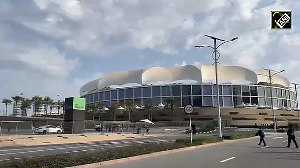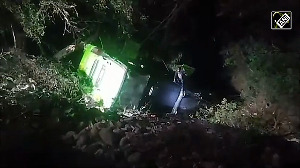DCGI, health ministry initiate dialogues with foreign regulators, try to understand global best practices
Even as the domestic pharmaceutical industry feels the heat of global scrutiny, the Drugs Controller General of India (DCGI) and the health & family welfare ministry have initiated proactive dialogue with international regulators.
While DCGI G N Singh is on a tour to Brussels, along with a team of health ministry officials and drug inspectors, starting Sunday, senior ministry officials have gone to St Petersburg for discussions with the Russian regulatory agency. “India is a developing country and we are evolving each day. The global standards are also changing and getting stricter with increasing generic penetration and competition. Since our companies are major players in the sector, they are under stringent scrutiny,” Singh told Business Standard, confirming he was going to the European Union (EU) to meet regulatory agencies there and understand their requirement of manufacturing best practices.
“India is a developing country and we are evolving each day. The global standards are also changing and getting stricter with increasing generic penetration and competition. Since our companies are major players in the sector, they are under stringent scrutiny,” Singh told Business Standard, confirming he was going to the European Union (EU) to meet regulatory agencies there and understand their requirement of manufacturing best practices.
Dialogues might also be pursued with the US Food and Drugs Administration (FDA), which recently issued several enforcements on major Indian drug makers like Ranbaxy, Wockhardt and RPG Lifesciences, besides Strides Arcolab’s injectible manufacturing arm Agila Specialities.
The regulator, along with the health ministry, is evaluating the issues highlighted by the US FDA and might invite officials from the agency to visit India and have detailed discussions on their requirements on good manufacturing practices and review implementations and processes here, according to an official.
A source said the European regulator had also pointed out some lapses in the Indian manufacturing systems, though no major domestic firm, except Wockhardt, had faced serious enforcement actions from the EU in recent times.
The latest intervention by the government and DCGI comes in the wake of an increasing number of Indian companies attracting import alerts, warning letters and recalls from the international markets — mainly the US, the world’s largest drug market that accounts for around 30 per cent of the Indian pharmaceutical industry’s revenues. For major drug makers like Ranbaxy, the country contributes around 40 per cent of their total revenues.
While the US FDA recently imposed an import alert on Ranbaxy’s manufacturing facility in Mohali (Punjab), barring supply of medicines from this unit to the US, Wockhardt’s Waluj facility faced a similar import alert earlier this year. The Wockhardt facility is under import alert from the UK drug regulator, too, which has barred supply to the all EU nations. Two other important facilities of Ranbaxy — at Paonta Sahib and Dewas — have been under import alert since 2008.
Other companies like Agila Specialties have received warning letters.
The Indian regulator, however, feels there is “nothing seriously wrong” with Indian standards or medicines manufactured here. Instead, it is a matter of “services”, which is a routine thing and can be corrected if it does not meet requirements, says DCGI Singh. The government and the regulator, therefore, are hopeful that dialogue among regulatory agencies would help understand each other’s requirements and mitigate the problem.
The Indian pharmaceutical industry, pegged at Rs 74,000 crore, is one of the major generic drug suppliers to the world. Others include the US, Israel and South Africa. In 2012-13, the US remained a top destination for India’s pharma exports, accounting for $3.7 billion, compared with $3.2 billion the previous year. The UK was the second with $511 million worth of exports, against $491 million a year earlier.
| Remedy for the ills? |
|
Under fire: Ranbaxy, Wockhardt, RPG Lifesciences and Strides Arcolab’s arm Agila Specialities have been under FDA scrutiny; Wockhardt has faced EU action in recent times Exchanging notes: Top DCGI and health ministry team visiting Brussels, St Petersburg; US FDA officials may be invited to India to step up dialogue The high stakes: The US is the world’s largest drug market, accounting for 30% of revenues of the Rs 74,000-crore Indian pharma industry; in 2012-13, the US was India’s top pharma export destination ($3.7 billion), followed by the UK ($511 million) |













 © 2025
© 2025